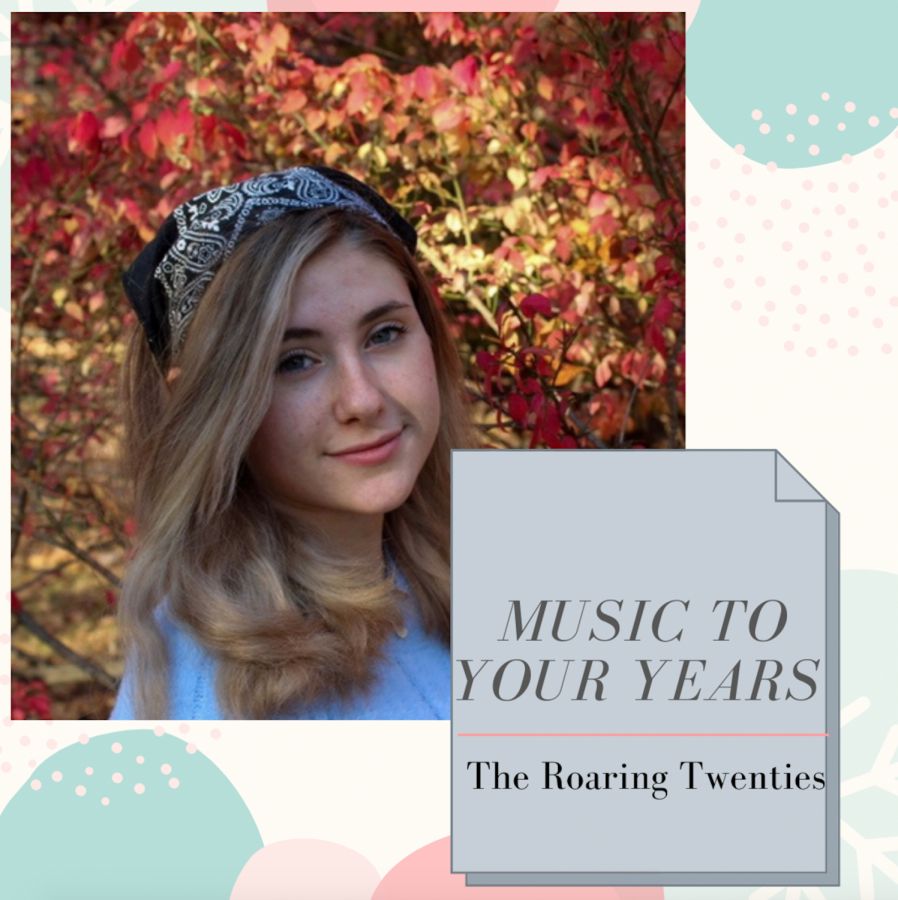Music to Your Years: The Roaring Twenties
When you’re studying The Great Gatsby, make a ’20s mix on Spotify
Jazz was big, and would continue to be for decades to come.
The 1920s was the decade that marked the beginning of the modern music era. It was a period of economic prosperity and cultural change. Radio stations were just becoming popular and flappers were the hot new scandal. People danced the charleston and it seemed like everything was swinging, shaking, bopping, and doo-wopping. This was the beginning of jazz.
The funky music style originated in the African American communities in New Orleans. It has roots in blues and ragtime, two other popular black styles of music preceding it. After just coming out of World War 1, people were excited to celebrate their victory, and jazz caught on like wildfire. New values swept aside the old-fashioned Victorian morals, and these values took shape in a desire for freedom. Jazz music represented and expressed this freedom wholeheartedly. The beauty of Jazz was in its improvisation, something rarely before seen in other styles of music. Jazz artists had the freedom to express themselves as they wished, and this was a powerful feeling to convey.
Jazz continued to rise to popularity throughout the 1920’s, aided by the newly developed radio technology. Unfortunately, its rise to fame did not go entirely unhindered. As the style gained popularity, its opposition did so as well. Due to the fact that it was an African-American dominated genre, white news reporters and radio hosts would stop at nothing to take away any fame earned through this new style of music. They promoted harmful propaganda, heavily encouraging white listeners to listen to other styles, and not support jazz.
Nevertheless, jazz continued to gain popularity, and records, shows, and artists were sought after all across the nation. Jazz was big and would continue to be for decades to come.
Now, names like Louis Armstrong and Duke Ellington are familiar to anyone with an old record player, but to others, these names are unrecognizable. So where did jazz go?
The truth is, jazz never left. Although it is less common nowadays for someone to put on an old record and do the Charleston, jazz has not disappeared. The free-flowing music style has many ties in modern music. When it comes to the new age sound, jazz is broken up into three sections, each featured in different genres.
A lot of the common chord progressions featured in Jazz can be found in various styles of popular music, but R&B, blues, and folk feature them especially. It is sampled by many styles but has the st in R&B, Blues, and Folk music. For example, the blues chord progression and the famous II-V-I (or its close relative the IV-V-I) is found in most styles and has been reinvented countless times.
On the other hand, the popular rhythm known to the genre has been sampled in many others. This syncopated rhythm really gets things moving forward with infectious energy and brightness. Jazz also borrowed from other cultures to expand its rhythmic possibilities and popularized various Latin grooves such as sambas, bossa novas, afro-Cuban and others.
Finally, and quite possibly most importantly, jazz as a whole has made an incredible impact on the hip hop genre. From the influence of the rhythms and melodies to direct samples, jazz has been featured in hundreds upon thousands of songs. Established jazz melodies have been sampled countless times, serving as a background for lyrics. For example, according to whosampled.com, Miles Davis’ music has been sampled 146 times, George Bensons’ 176, and Herbie Hancock’s a whopping 282 times.
Although jazz rarely exists on its own in the 21st century, it still lives on through other genres, making it one of the most influential genres in history.



